A new version of the OEE application has been released
The following updates have been added to the OEE application.
1. Language support added to stop cause
In Configuration->Stop cause, it is now possible to give a provide a name for each supported language to a stop cause.
When one create or edit a stop cause, one can type a name for each supported language:

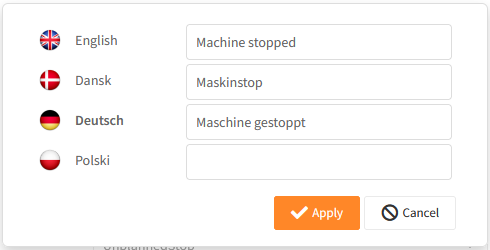
And the selected language's name will be shown in the web:

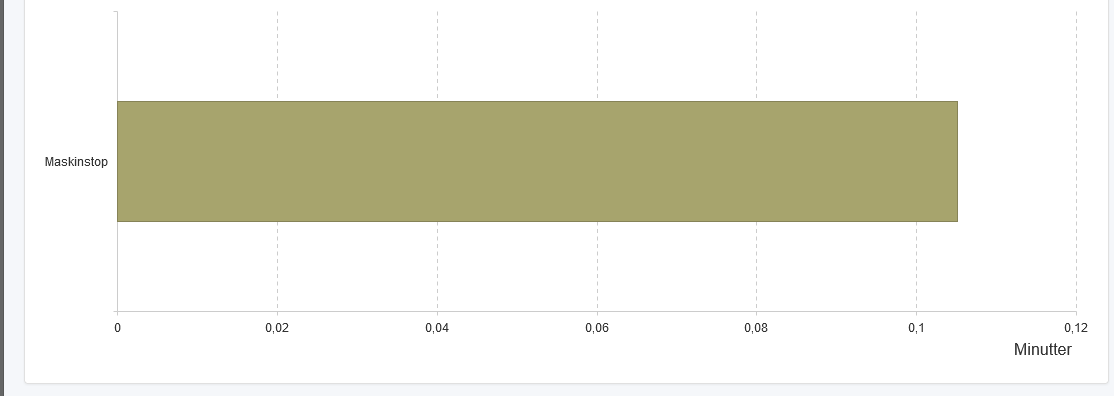
There is also a default stop cause translation setting in Configuration->Company Settings:

That will be used if the selected language doesn't have a translation:

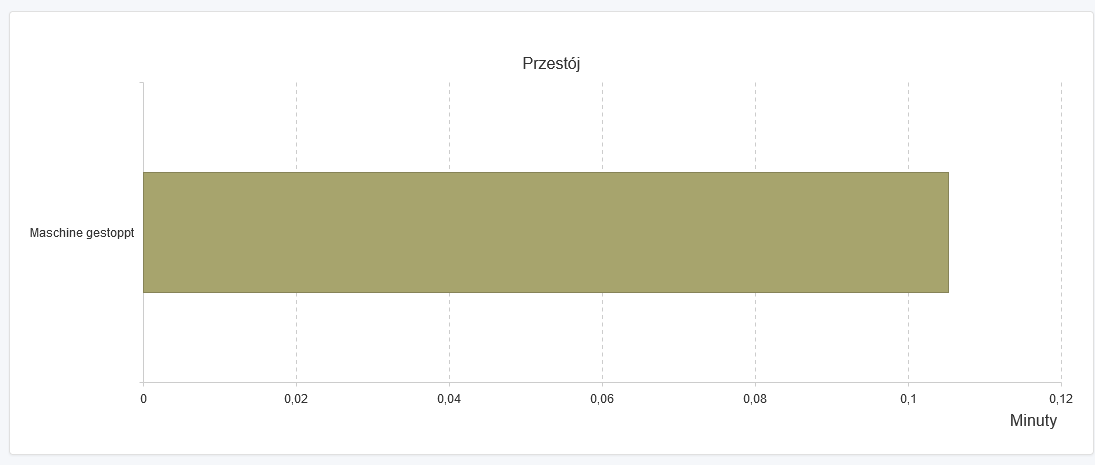
If the stop cause doesn't have a translation for the company setting, then the English translation will be used and lastly, if there is no English translation, then the first found translation will be used.
2. Include parent stop cause in stop causes report
In Reports->Stop causes, it is now possible to include the parent stops when the Graph type is set to Unit by unit:

The parent stop cause will have the stop duration and stop count of itself and its children
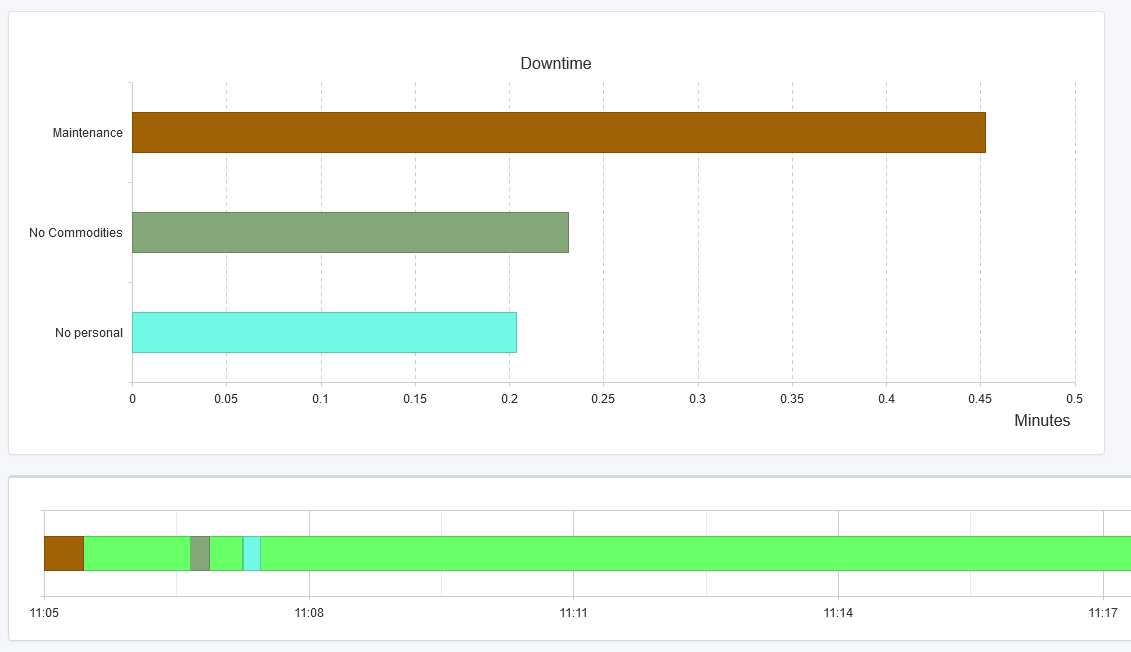
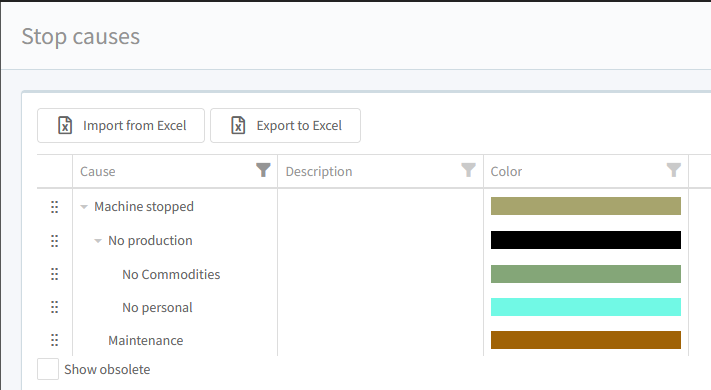
This can be used to categorize the parent stops, which parent has the majority of stops are and which has the longest duration.
3. Operators can add comments to a stop in stop history report
In Reports->Stop history, it is now possible for users with Operator role:

To add comments:


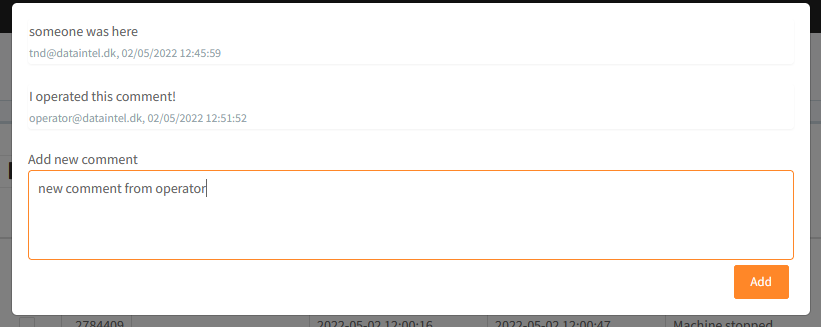
4. See last comment on a stop in timeline
In the timelines, it is now possible to view the last comment on a stop:

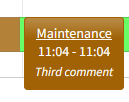
5. Subscription production table includes shift names, when interval is set to shift
In Reports->Subscription, it is now possible to see the shift in the production table report, when interval is set to shift:
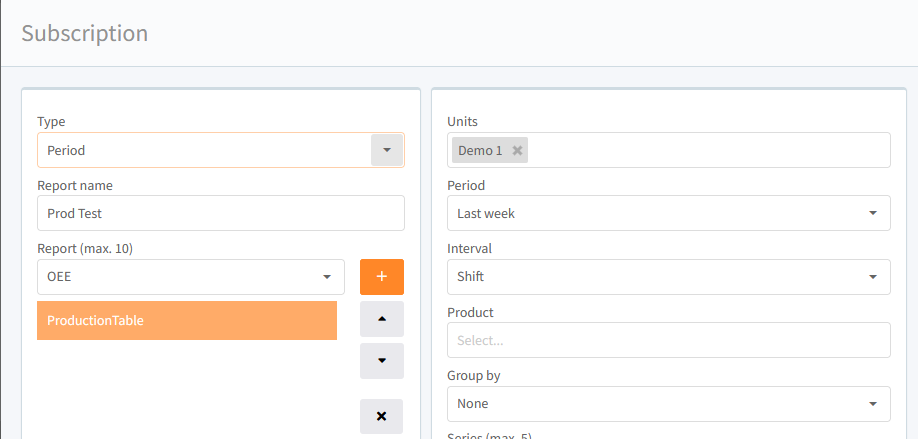

6. Event server Produced items now has the option to set the unit on Ideal cycle time tag
In Configuration->Data source, it is now possible to set the unit on the Ideal cycle time tag.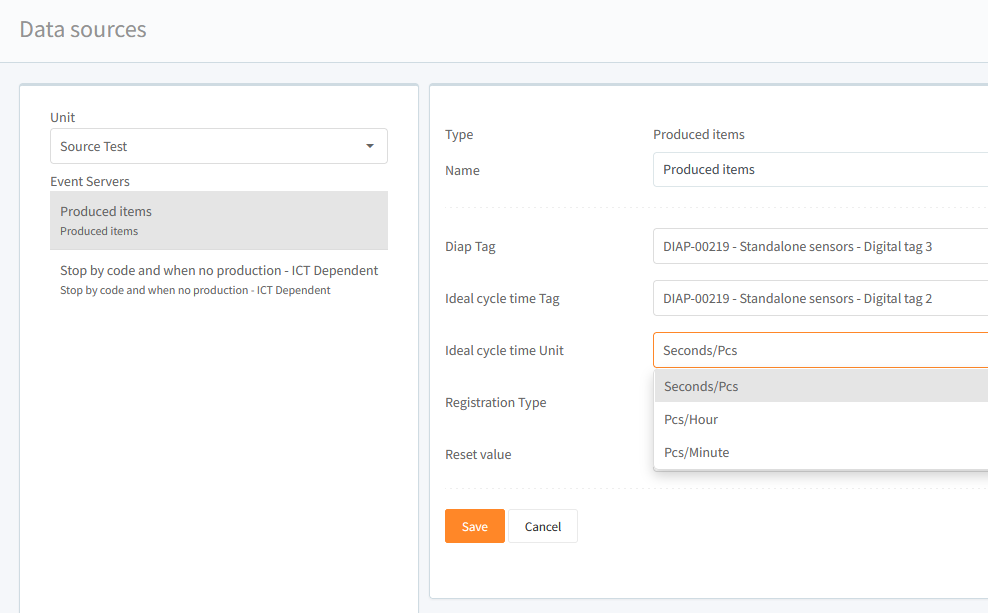
7. Using default next order number is now an option
In Configuration->Company settings, it is now possible to set whether you want the order number to be set with a default value or not:
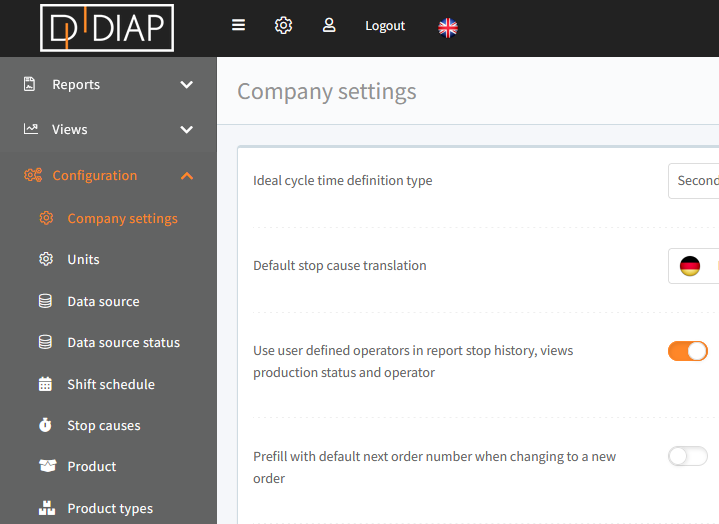


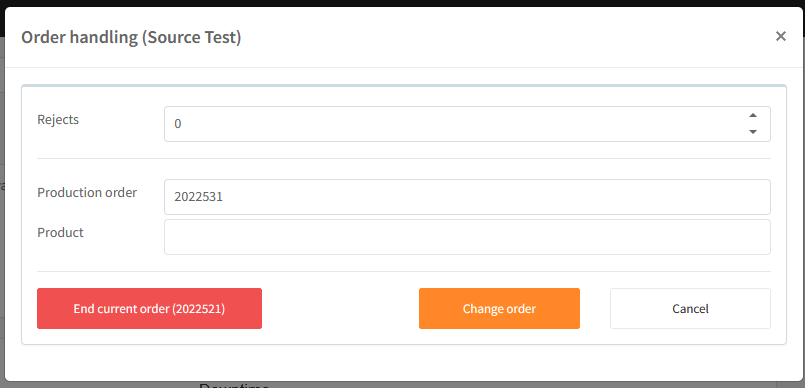
8. Bug fix: Production selection changed in order handing
A bug resulted in product text search not accepting input:
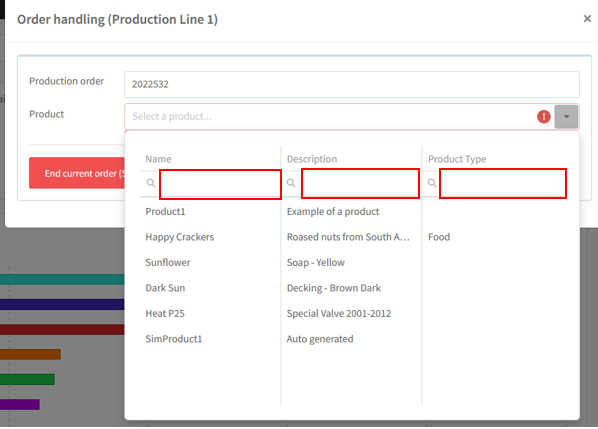
We have changed the component used to select the product:
Click on the input box to view the list of products: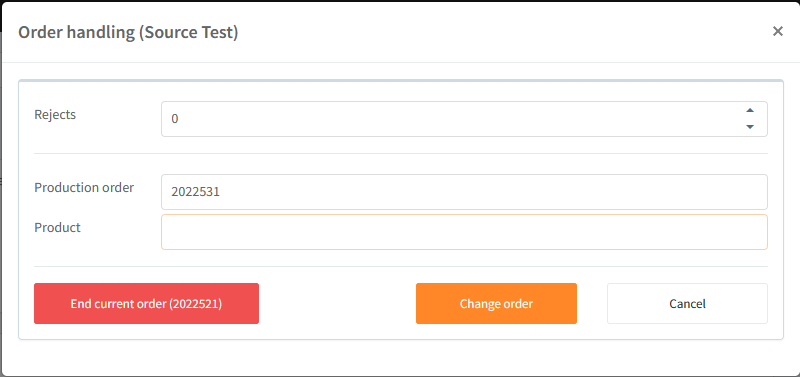
Now one can text search for the product:
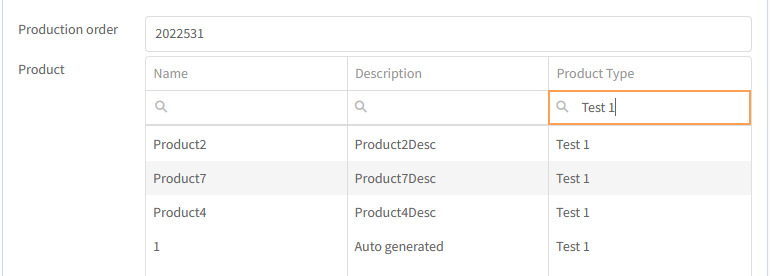
When the product is found, click on it to select it:


9. Top bar icon changed for the whole platform
The top right bar icon is changed
from:

To:

There is no loss of functionality. The removed icon:

Didn't hold any functions it just pointed to the same site as:

10. Updated ListReadings in web API
In the web API, the function ListReadings has been updated:

Now there is a max. 10 tag's id limit in the paramter TagIds on each request, but the number of hours between fromUtc and toUtc is increased from 12 hours to 24 hours. There is also introduced a max. reading limit of 864000 readings per request. This gives a resolution of 1 second (1 reading per second) over 24 hours for 10 tags. If you reach the limit, you can reduce the number of tag ids you use per request, to get rest of the data.
11. Added ListTagStatistics in web API
In the web API, the function ListTagStatistics has been added:

This function provides statistics on the tag readings like max. value, min. value, average value, sum and count for a period with the data divided up into intervals. This function is great for when you want summarized data, and it can provide a much larger fromUtc - toUtc range than ListReadings. There are 2 cases for limits in this function:
The interval is set to hour:
Max. tag ids: 10
Max. hours between fromUtc and toUtc: 24
The interval is not set to hour:
Max. tag ids: 100
Max. hours between fromUtc and toUtc: 8784
The reason why you may use more tags and larger range, when the interval is set to something else than hour, is that we store summarized data on daily bases and can use these data when interval is larger than hour. When you request per hour, we have to use the raw readings.
There is also the max. 864000 readings per request limit in this function, this shouldn't give you any problems. Only the first case can reach this limit and that requires, that your tags provides more readings than 1 per second, and if that is the case, then you can reduce the number of tag ids in request.
Depending on the browser then it may be required for you to clear your cache in order to see the latest functionalities.
If there are any questions to this update, then please contact support@dataintel.dk.
